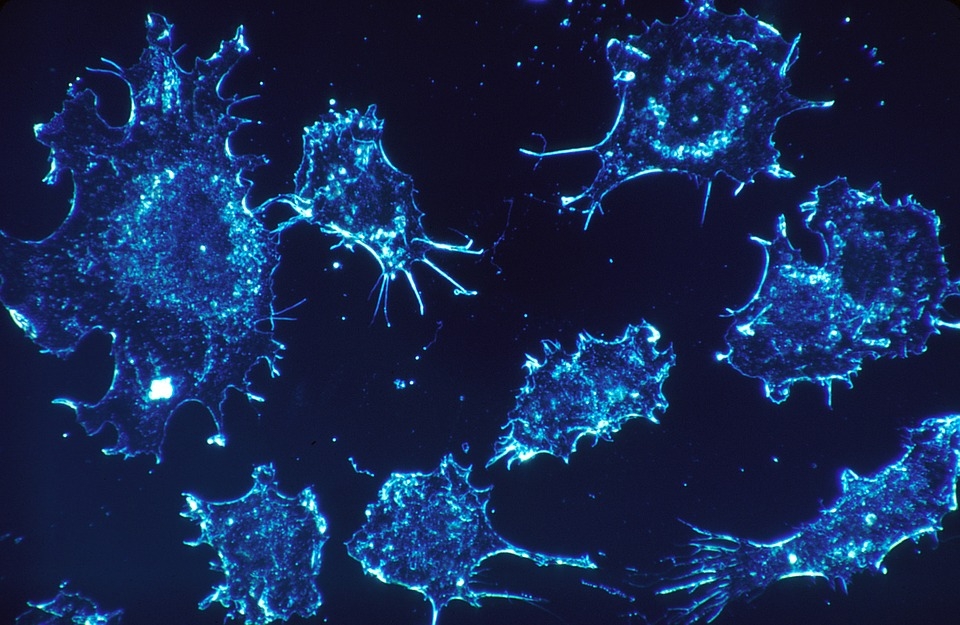Cancer is currently one of the world’s leading causes of death in terms of diseases. One of the reasons why its many variations are so difficult to cure is the adaptability of cancer cells. In order to address the problem at its roots, researchers have been focusing on the role of metabolism in cancer cure development.
In a new study, researchers at the University of Michigan Rogel Cancer Center in Ann Arbor looked into how cancer stem cells lead to drug resistance in cancer, Medical News Today reports. Basically, while medication may work in treating one form of cancer, another dormant type can always come to life. This is why finding an effective cancer cure has proven so difficult.
The lead author of the study, Dr. Max S. Wicha, explained that conventional methods of curing cancer uses targeted treatment. While it may work for some time, eventually, the type of cancer cells being targeted may form resistance. They simply change form so that the targeted treatment no longer works.
In the paper, published on Cell Metabolism, the researchers reveal how they targeted metabolism to address this issue. Specifically, the scientists looked into the role of metabolism in enabling cancer cells to change form. This has to do with how dormant cancer cells use glucose while active cells use the mitochondria for fuel.
Using a two-pronged method, Dr. Wicha and his team cut off the connection of active cells to the mitochondria and manipulated glucose to do the same thing. For the first part, they used an arthritis drug. This method basically used the adaptive capabilities of the cancer cells to kill them, leading to a more direct form of cancer cure.
"Rather than just try to use toxic chemicals to kill a cell, we use the metabolism of the cell itself to kill the cancer," Dr. Wicha had said about their findings.
For their cancer cure research, the scientists focused on breast cancer cells, which they tested on mice. This method basically knocked the cancer cells out of the specimen, which is an encouraging sign for human patients.



 Elon Musk says ketamine can get you out of a ‘negative frame of mind’. What does the research say?
Elon Musk says ketamine can get you out of a ‘negative frame of mind’. What does the research say?  Gut microbiome: meet Clostridium butyricum – the bacteria that helps keep us feeling our best
Gut microbiome: meet Clostridium butyricum – the bacteria that helps keep us feeling our best  Type 2 diabetes is not one-size-fits-all: Subtypes affect complications and treatment options
Type 2 diabetes is not one-size-fits-all: Subtypes affect complications and treatment options  Proteins in milk and blood could one day let doctors detect breast cancer earlier – and save lives
Proteins in milk and blood could one day let doctors detect breast cancer earlier – and save lives  What’s the difference between ADD and ADHD?
What’s the difference between ADD and ADHD?  Half our colleagues suffer pain and discomfort from periods. But they’re still a taboo subject at work
Half our colleagues suffer pain and discomfort from periods. But they’re still a taboo subject at work  Does ejaculating often reduce your risk of prostate cancer?
Does ejaculating often reduce your risk of prostate cancer?  How to look after your mental health while packing up Mum or Dad’s home
How to look after your mental health while packing up Mum or Dad’s home  Child health is in crisis in the UK – here’s what needs to change
Child health is in crisis in the UK – here’s what needs to change  Traditional Japanese diet associated with less brain shrinkage in women compared to western diet, says research
Traditional Japanese diet associated with less brain shrinkage in women compared to western diet, says research  Gut microbiome: meet Roseburia intestinalis — the energy-producing bacterium that helps us fight against disease
Gut microbiome: meet Roseburia intestinalis — the energy-producing bacterium that helps us fight against disease  What if flat feet were…normal? Debunking a myth about injuries
What if flat feet were…normal? Debunking a myth about injuries  Why the government’s haste in changing the health system could come back to haunt it
Why the government’s haste in changing the health system could come back to haunt it  Surgery won’t fix my chronic back pain, so what will?
Surgery won’t fix my chronic back pain, so what will?  Can a drug like Ozempic help treat addictions to alcohol, opioids or other substances?
Can a drug like Ozempic help treat addictions to alcohol, opioids or other substances? 






























